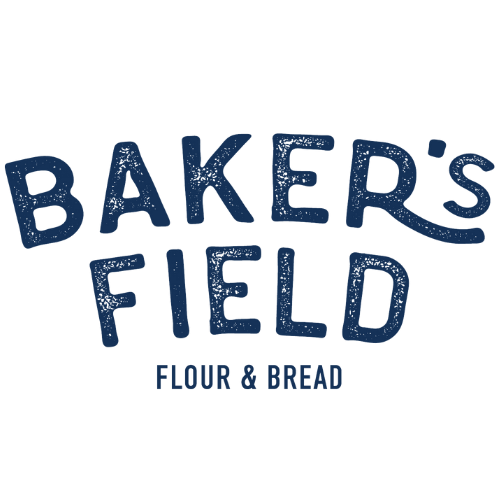We’ve already discussed why we bakers here at Baker’s Field mill our own flour. As eaters, we love the nutrition and flavor. As bakers, we relish the control and craft. All excellent reasons for you, the home baker, to add our bakery-milled flour to your kitchen pantry. However, our flour does behave differently than the industrial flour you may be using now. We are here to help you adjust and discover the miracle of fresh flour!
1. The general rule is that fresh flour tends to need more hydration than industrial flour. So if you’re baking bread, keep this in mind. Be ready to use more water.
2. Fresh flour has a lower tolerance for mixing; you will not need to mix or fold dough made with our flour as aggressively as you may be used to.
3. Lastly, each variety of grain is different. So if one month you buy Prosper, it may perform differently than the variety you buy the following month (say, Ingmar). Making these adjustments requires some practice and calculating; this is part of the fun! (Check out our online flour shop, which notes the differences between the varieties we sell.)
4. In general, bread made with fresh flour will not get as much volume as bread baked with industrial flour. Know this before you begin so you won’t be surprised.
5. You can always email us your specific flour questions. We love hearing from you and are happy to answer questions. Email: contact@bakersfieldflour.com
You may find the differences between our flour types to be confusing. I’m going to break them down for you:
BREAD FLOUR: Our high-extraction bread flour is sifted to remove some of the bran and highlight the germ and the endosperm. This is different than the “white” industrial flour you may be used to buying, which contains no germ. We prefer to keep the germ and some of the bran in the flour for both flavor and nutrition. A hard red spring wheat grain, the defining characteristic of bread flour is creamier bread.
Best Use: bread and pizza
WHOLE GRAIN FLOUR: Commonly known as whole wheat flour, this variety of hard red spring wheat flour contains the entire grain -- the bran, germ, and the endosperm. This is a highly nutrient rich flour. We love making bread that uses all the parts of the grain -- the flavor is earthy and grassy and just special!
Best Use: bread, pasta, and grain-forward sweet treats
PASTRY FLOUR: We sift organic soft white winter wheat for this flour, removing some of the bran. This flour can be used like all-purpose flour. It is lower in protein (and therefore gluten) than our bread flour, and therefore is not meant to be used for bread.
Best Use: cookies, pies, muffins, cakes

